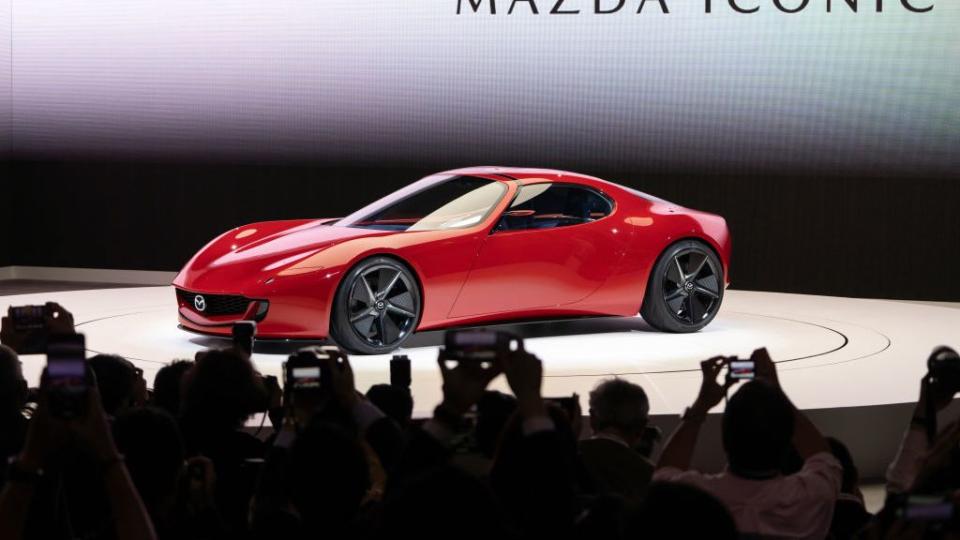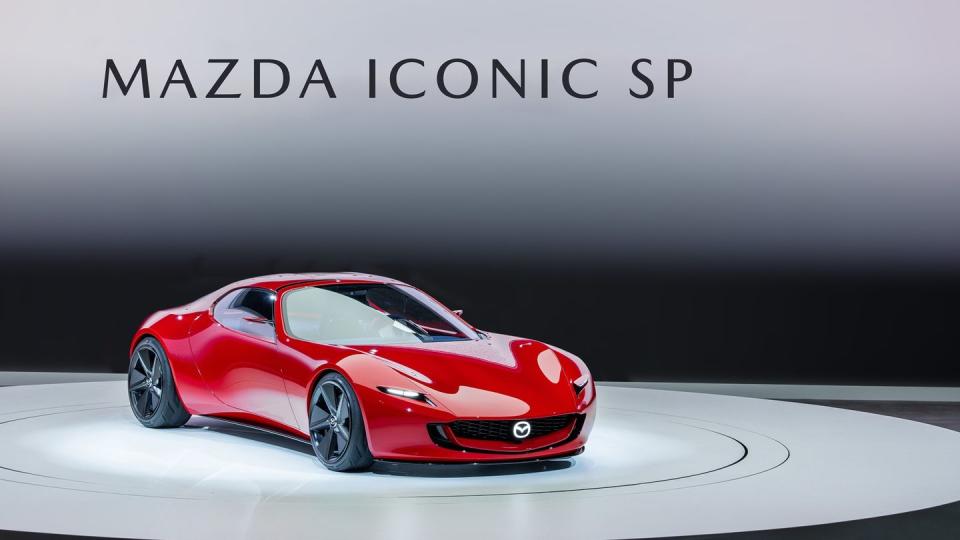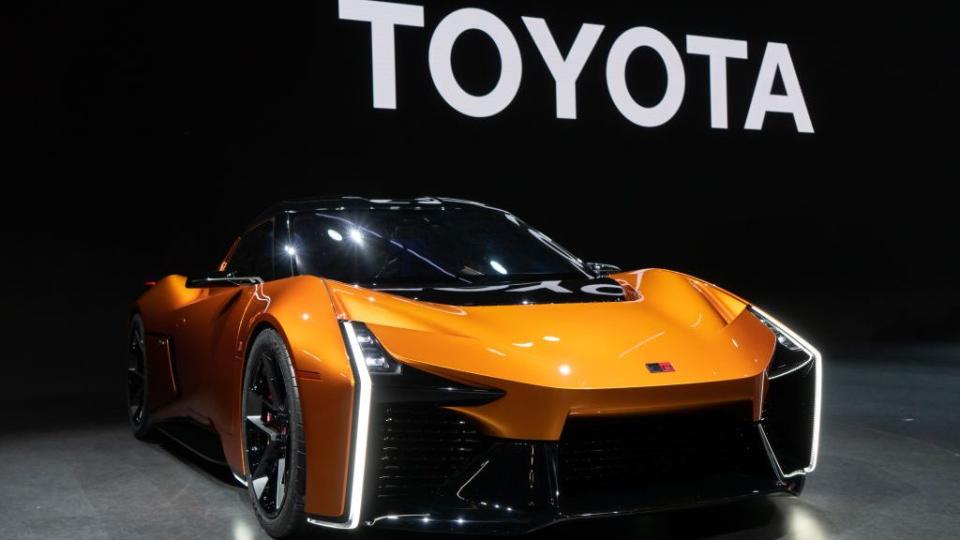The Sport Compact Nostalgia Cycle Is Finally Here

The automotive nostalgia cycle has finally reached the 1990s. After two full decades of American companies building enthusiast-focused lineups around the greatest badges of the 60s and 70s, this year's Tokyo Mobility Show saw the debut of five separate concepts calling back to the more recent glory days when unique performance cars graced the showrooms of Subaru, Toyota, Nissan, Mazda, and Honda dealers across the world.
While these range from what sure looks like a production-ready Honda Prelude with a lot of current Civic Hybrid underneath to a Subaru EV that will almost certainly need to drop its backlit fenders before it reaches production, all five concepts are built around either a badge we all know from the 90s or the core idea behind a beloved car from the era. These are, to varying degrees, nostalgia plays built on the foundation of great work done 30 years ago or more.
Some of these connections take a little more imagination than others. The Prelude is, obviously, a Prelude. With the help of a rotary engine and pop-up headlights, the Mazda Iconic SP looks less like a retro-futuristic take on the RX-7 and more like what would have happened if the car had stuck around uninterrupted in the 21 years since the FD generation ended. Toyota's FT-Se is an EV, but one with the proportions of a mid-rear engine car that could fulfill the long-rumored potential for the brand to introduce an MR2 successor with Gazoo Racing branding. The Nissan Hyper Force doesn't bear the GT-R badge, but the tail lights tell every bit of the story about what we're meant to see in the concept. Even the abstract Subaru Sport Mobility Concept is hiding a little nostalgia underneath all those lights, in the form of a compact body that mirrors the golden age of two-door Imprezas that gave us the beloved 2.5RS and holy grail 22b rally special.
All of these cars are building to a very different production model, ones that are unlikely to compete directly with one another in any single segment. However, they all come from the same place: A very intentional effort to show enthusiasts that they will not be left behind as a brand electrifies.
Each brand here is late to electrifying its lineup to some degree. Even Nissan, who was a pioneer in EV sales with the Leaf, is trailing in that marketplace. Now that all five are playing catch-up at once, each has chosen a performance car to illustrate to enthusiasts that their EV lineups will recall what made the brands so great in their gas-powered heyday. They are signals, reminders from these brands that the all-important demographic of young adults with money driving up prices on the world's supply of Mk. IV Supras are going to be a key market as all five companies catch up to a world where the EV sports car is in the process of moving from impossible dream dream to high-volume product.
Each car has a very different approach to the problem, though. This is how all five make their case.
The automotive nostalgia cycle has finally reached the 1990s. After two full decades of American companies building enthusiast-focused lineups around the greatest badges of the Sixties and Seventies, this year's Tokyo Mobility Show saw the debut of five separate concepts calling back to the more recent glory days when unique performance cars graced the showrooms of Subaru, Toyota, Nissan, Mazda, and Honda dealers across the world.
While these range from what sure looks like a production-ready Honda Prelude with strong hints of Civic Hybrid underneath to a Subaru EV that would almost certainly need to drop its backlit fenders before it reached production, all five concepts are built around either a badge we all know from the Nineties or the core idea behind a beloved car from the era. These are, to varying degrees, nostalgia plays built on the foundation of great work done 30 years ago or more.
Some of these connections take a little more imagination than others. The Prelude is, obviously, a Prelude. With the help of a rotary engine and pop-up headlights, the Mazda Iconic SP looks less like a retro-futuristic take on the RX-7 and more like what would have happened if the car had stuck around uninterrupted in the 21 years since the FD generation ended. Toyota's FT-Se is an EV, but one with the proportions of a mid-rear engine car that could fulfill the long-rumored potential for the brand to introduce an MR2 successor with Gazoo Racing branding. The Nissan Hyper Force doesn't bear the GT-R badge, but the tail lights tell every bit of the story about what we're meant to see in the concept. Even the abstract Subaru Sport Mobility Concept is hiding a little nostalgia underneath all those lights, in the form of a compact body that mirrors the golden age of two-door Imprezas that gave us the beloved 2.5RS and holy grail 22b rally special, while sporting the boxiness of the near-forgotten Subaru XT. All of these cars are building to a very different production model, ones that are unlikely to compete directly with one another in any single segment. However, they all come from the same place: a very intentional effort to show enthusiasts they will not be left behind as these brands electrify.
Each automaker here is late to electrifying its lineup to some degree. Even Nissan, who was a pioneer in EV sales with the Leaf, is trailing in that marketplace. Now that all five are playing catch-up at once, each has chosen a performance car to illustrate to enthusiasts that their electrified lineups will recall what made the brands so great in their gas-powered heyday. They are signals, reminders from these brands that the all-important demographic of young adults with money driving up prices on the world's supply of Mk. IV Supras is going to be a key market. That is, as all five companies catch up to a world where the electric sports car is in the process of moving from impossible dream to high-volume product.
Each car has a very different approach to the problem, though. This is how all five make their case.
Mazda Iconic SP
While Mazda has not yet established what exactly the Iconic SP is previewing, the size and shape make sense as both a successor to the current ND MX-5 or a slightly larger partner in the brand's lineup to sell at a higher price and performance target against Toyota's current Supra and Nissan's current Z. The powertrain shown here is a little complex for a Miata successor, with a two-rotor engine helping power a battery electric drivetrain in a car that weighs 800 lbs more than the current MX-5.
Coupled with the choice of a rotary engine for that task, the Iconic SP instead looks more like a very new take on the RX-7 concept. While the car is heavier than the sports cars of the past, it can also be more powerful. If both reach production, that should differentiate it in the lineup from a more traditional NE MX-5. Hopefully, both will take advantage of the car's spectacular take on classic sports car proportions.

Toyota FT-Se
Toyota buyers who wanted a mid-engined, gas-powered car may be disappointed to see the FT-Se so focused on electrification, but the move to EVs has given the brand a great excuse to build something with the proportions of a modern MR2. Compact battery concepts previewed in another Toyota concept at the show have given the brand the opportunity to design a relatively small and sleek EV, one that looks like it could be every bit as responsive as a Gazoo Racing-branded sports car should be.
A production FT-Se will need a name, but the concept looks surprisingly road-ready otherwise. Both the first-generation GR86 and fifth-generation Supra debuted as FT-branded concepts first, as did the Lexus LC. The FT-Se looks more than ready to join them as the fourth two-door performance car in the Toyota family, although it may be the fifth by the time we figure out what exactly the GR GT3 race car is supposed to be.

Honda Prelude
Unlike the other four cars here, the Prelude concept seems to be more of a traditional hybrid. It also looks far more production ready than the rest, missing just an all-important interior. While the design is a lot more interesting than any Civic or Accord coupe sold in America over the past two decades, the car itself is easy to imagine as a replacement for both lines if it were to eventually reach American showrooms.
Like the original, the new Prelude's status as a performance car is iffy. The basic hybrid model might be something more like the non-premium equivalent of a grand tourer, focused on some combination of road presence, comfort, and driver experience over all-out track times. Hopefully, the car eventually receives some help from the underpinnings of the tremendous Civic Type R and Integra Type S, too.

Subaru Sports Mobility Concept
Unlike the other cars here, the Sports Mobility Concept's shape does not exactly evoke nostalgia. Though somewhat reminiscent of the Subaru XT, this is an almost cartoonishly futuristic design, complete with lighting in places where it does not belong and headlights that look like they were borrowed from an EV truck concept. The spirit of the Nineties is more in the concept itself, a fun coupe with a simple three-box shape that would make sense as a daily driver for someone who needs their car to do car things but does not need it to seat four comfortably every day.
Of these five cars, this one seems to be the farthest from a production-ready model. It still is not far off, though. After you simplify those fenders and bumpers, give the greenhouse some thicker pillars, and add some real side-view mirrors, this might actually start to look like a road car. Whether or not Subaru's future is in making cars like this, the Sports Mobility concept at least shows that the brand has not forgotten that it once built dedicated performance cars.

Nissan Hyper Force Concept
This is not a GT-R. Well, not yet. For now, the Nissan Hyper Force is just a concept that happens to have an evocative set of tail lights and a silver-red icon in the front in the exact color pattern of the GT-R badge we all know.
The veil here is thinner than most. While a production car based on the Hyper Force will almost certainly lose some of the Nineties cartoon Batmobile shape, the underpinnings here are clearly those of an EV meant to serve as the next generation of GT-R. Given that this concept has a claimed 1341 hp and a plasma actuator for advanced aerodynamic control, the potential R36 this concept seems to be previewing could be one of the most sensational cars on the road.

You Might Also Like

 Yahoo Autos
Yahoo Autos 